Our Top 6 Apps for Podcast Production
Want to streamline your podcast production while also delivering a high quality show?
There are apps for that!
I asked the Vocal Fry team which apps they use to produce podcasts, and they provided a nice sampling of free tools and super profesh heavy lifters.
Descript
Edit audio by editing text. If you’re a visual person, Descript may be a tool to add to your podcast making set-up. Descript bills itself as an “all-in-one audio & video editing, as easy as a doc.” The editing interface looks like a mix between a word processor and Garageband; you upload your audio file into the desktop app and then click transcribe. Descript goes to work and leaves you with a transcript that you can clean up and edit to your liking. If you want to cut out a long segue by a lovely guest, just highlight and delete. It also has a pretty cool tool that removes filler speech (like, um, ah, you knows) with a single click. Now, we wouldn’t edit an entire podcast in Descript, we have more powerful software for that, as you’ll see below. But, it’s a great first stop for editing down long interviews to their best parts. If you want to see what all the fuss is about, Descript offers a 7 day free trial.
Total Recorder
Okay, visiting the website for Total Recorder is like going back to a Myspace site in 2005. But the bare bones aspect of this podcast recording software is what makes it awesome. If you want an uncomplicated way to capture any sound played by a computer (like streaming audio and mic and line-in input) try it out. Total Recorder can also capture video, and performs audio file conversions. It’s literally just a tool to record audio from within the computer, like YouTube and stuff. You don’t always need a bunch of fancy tools to make podcasts.
Voice memo app
You may not have a podcast mic, but chances are you have a smartphone. Voice memo apps that come installed on even older model smartphones are a pretty solid option for basic recording. Your voice memo app can be your best friend to make a basic podcast, provided you take some extra steps to make the audio sound crisp. Wear headphones, sit in a sound-dampened place like a closet, and hit record. You’re golden! Touch Technology Review has a great video on how to record audio using the voice memo app, perform basic trimming, and export it. And here’s another way to use a voice memo app — tape syncs with remote guests.
Adobe Audition
Audition is a digital audio workstation from Adobe. It features both multitrack and waveform editing view so you can switch between destructive and non-destructive editing. It’s reliable, intuitive to use, and most podcasters I ask use Audition. You can do it all in Audition: assemble your clips, mix levels, add music beds, and edit your final mixdown.
Something to note when it comes to Adobe products is that they’re subscription based and kind of expensive. Audition by itself costs US$20.99/month on an annual plan, or you can purchase Adobe’s entire Creative Suite for US$31.49/month which includes Premiere Pro, InDesign, Photoshop, AfterEffects, and many more. I personally have the full monthly Adobe suite, because I use multiple software every month and therefore it is worth the price. HOWEVER, pro tip: Keep an eye on upcoming Black Friday deals later this month. Last year I snagged mine for 25% off the regular price. They also have student discounts.
Psssst. If you’re still new to podcasting and have never edited audio before, you could try out Audacity first, a free open source multitrack audio editor and see how you like it.
iZotope RX Plugin
iZotope is a suite of plugins you can use with Adobe Audition, Logic Pro, Pro Tools, and a bunch of other audio editing softwares. This is a powerful tool used by post production sound engineers for audio repair. It has EQ, compressor, noise reduction, and audio repair tools that our podcast producers use — it’s probably the most widely used in podcasting. If you want the cleanest audio possible, iZotope uses machine learning to extract clean dialogue from background noise like traffic, crowds, hums, or buzzes.
Again, if you’re in the market for a post production tool, there’s a big iZotope holiday sale!
PS. Their website features a testimonial from the Academy award winning sound editor for Dune and Mad Max: Fury Road. Kind of epic.
Audio Hijack
If you can hear it, you can record it. Audio Hijack allows you to record audio from any application (Skype, Zoom, Safari, Chrome, etc.) You can also use it to record audio from hardware devices like microphones and mixers. It’s similar to Total Recorder, but available only on MacOS. If you’re curious how it could help your podcast production workflow, their website has a great one minute tutorial on how it works. The best part? It’s a lifetime license, so no monthly billing.
Well that’s it folks. Maybe you already use these tools, in which case, good on you! Maybe you’re curious about what the pros use, and what you could potentially add to your workflow. I think the best takeaway from this list is that when I polled my teammates, I was delighted to find out that you don’t always need fancy tools to make quality podcasts.














